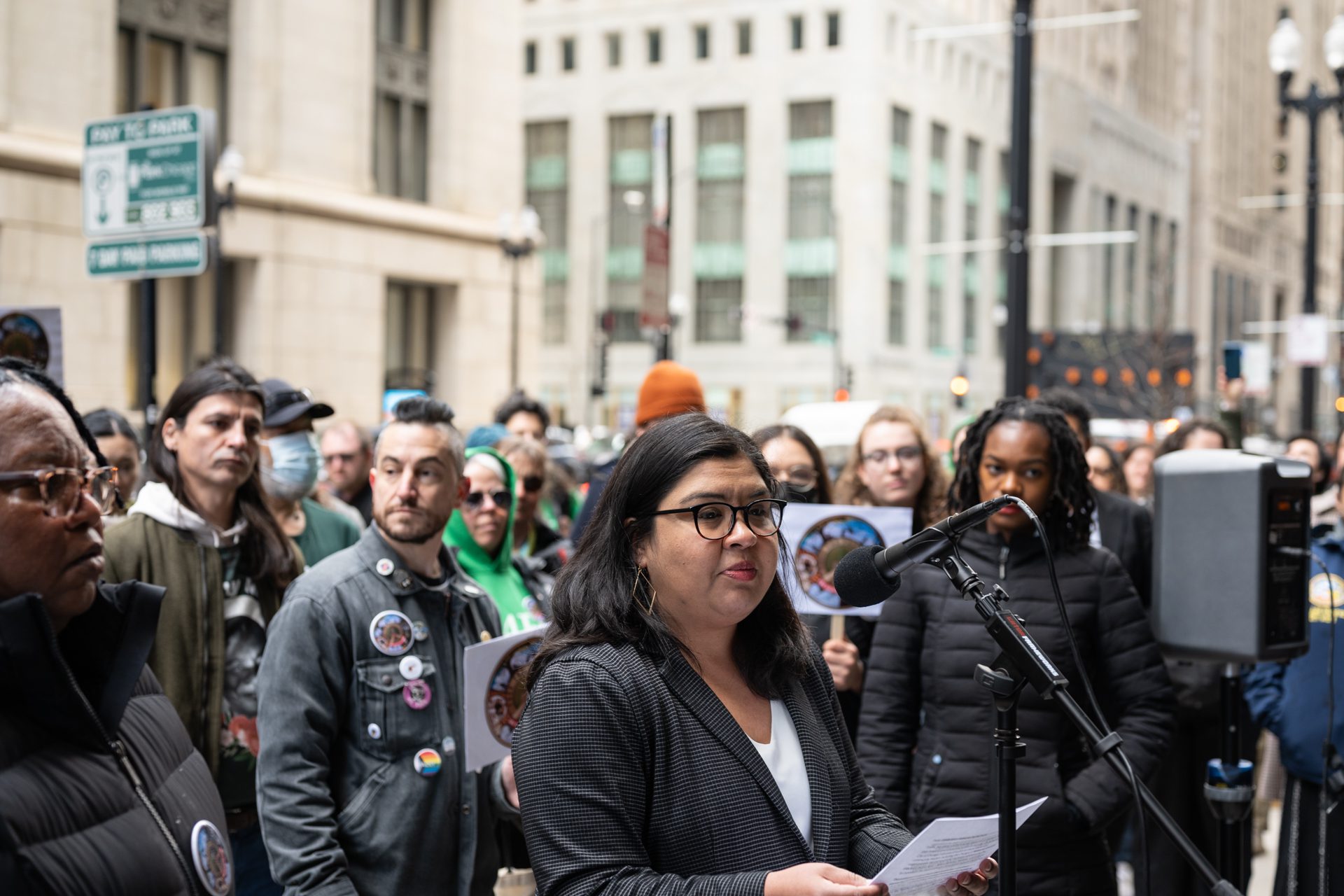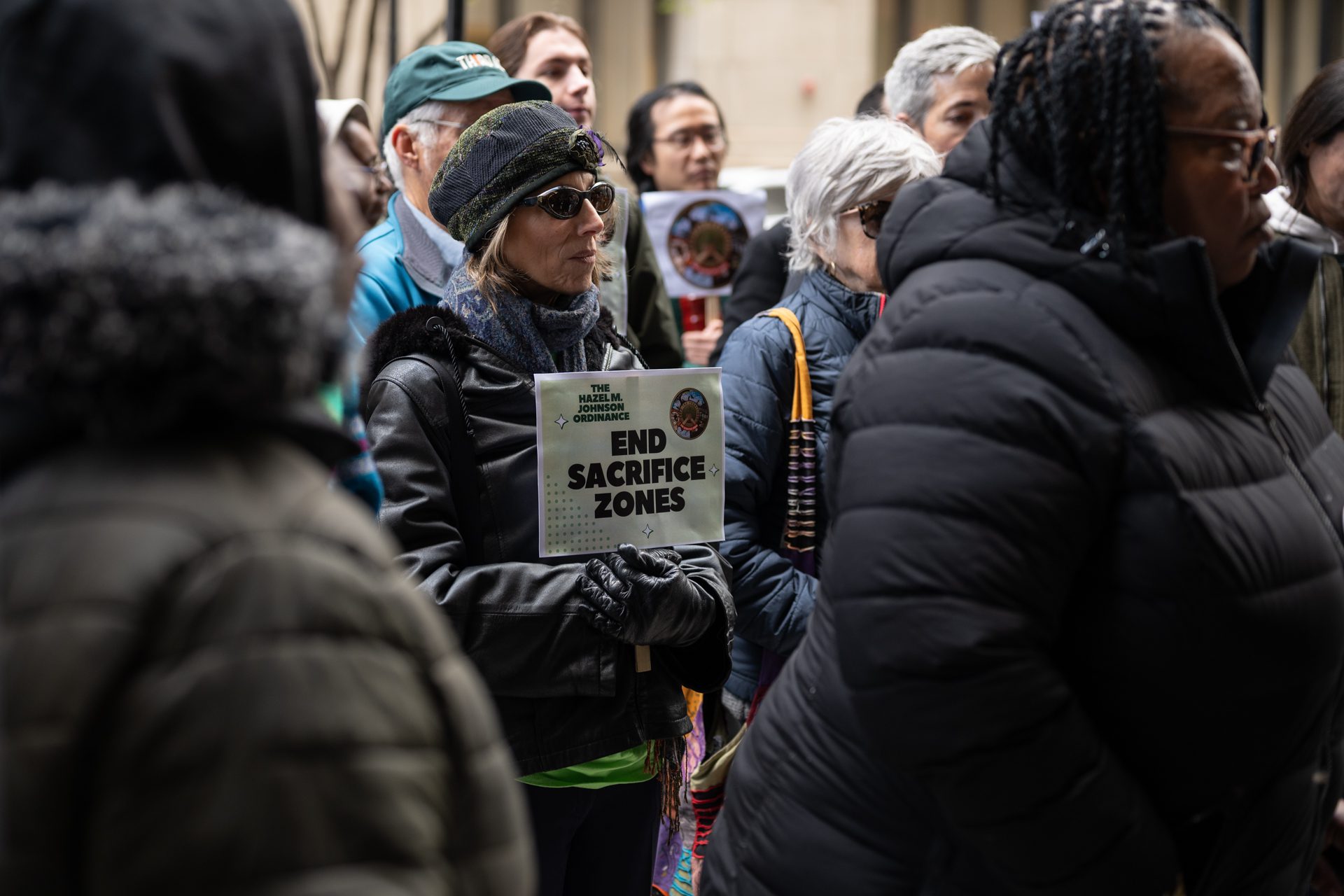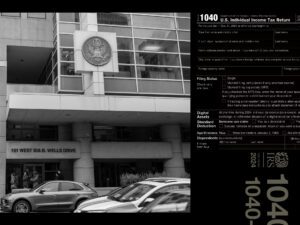 Max Herman/Borderless Magazine
Max Herman/Borderless MagazineAn ordinance introduced in City Council on Wednesday would address zoning and land use policies the federal government found to be environmentally discriminatory toward communities of color in the South and West Sides.
On Wednesday, environmental advocates gathered outside City Hall to call for support of a new ordinance aimed at better protecting Chicago’s disproportionately polluted neighborhoods.
“Today, we stand united and we stand tall in taking a historic step toward environmental justice in our city,” said Chicago’s Chief Sustainability Officer Angela Tovar, who rallied alongside alderpeople and environmental justice groups.
The “Hazel M. Johnson Cumulative Impacts Ordinance,” introduced by Mayor Brandon Johnson, is aimed at reducing environmental burdens felt by Chicagoans in primarily Black, Latino and low-income neighborhoods. If passed, it would change zoning, permitting and land-use policies for certain industrial developments with high potential for pollution.
Want to receive stories like this in your inbox every week?
Sign up for our free newsletter.

The proposed ordinance comes after the Trump administration revoked several federal-level environmental justice policies that required agencies to address environmental justice in minority and low-income populations.
Cheryl Johnson – the daughter of “the mother of environmental justice,” Hazel Johnson –says the new proposed city zoning changes have been 40 years in the making.
“This ordinance, in the name of my mother, is a beginning to a new day for us–better air, quality of air we will breathe in our community,” said Johnson, who is also executive director of People for Community Recovery. “For the first time in the history of the city of Chicago, we’re all sitting at the table to evaluate the quality of life, the quality of air for all communities.”
Some changes proposed by the ordinance include:
- Establish an environmental justice advisory board with up to 21 members, including community members from communities disproportionately burdened by pollution
- Require the Department of the Environment to assess cumulative environmental burdens across the city every five years
- Add an Environmental Justice Project Manager role at the Chicago Department of the Environment to oversee the advancement of environmental justice initiatives
- Require applicants seeking a zoning permit for heavy industrial land uses to study and assess the potential environmental and health impacts as part of the zoning process
- Require certain site plan review applications to include a traffic study and an air quality impact evaluation for city agencies to review and for public comment
Read More of Our Coverage
Certain applicants seeking a zoning permit for heavy industrial land uses would also be required to host meetings in the ward of the site’s location to educate the community on the proposed project.
City officials drafted the proposal after the U.S. Department of Housing and Urban Development found the city’s zoning and land use policies environmentally discriminatory against people of color. The investigation showed that these policies pushed polluting industries into the South and West Sides. Under a settlement agreement, the city must address the issue or risk losing hundreds of millions of dollars in federal funds.
Heavy industry in Chicago is primarily located on the city’s South and West sides. These areas — home to many Black and Latino residents — face some of the city’s worst pollution and shortest life expectancy. A study from the New York University School of Medicine found that Chicago has the largest gap in life expectancy across neighborhoods of 500 American cities examined, with life expectancy varying up to 30 years between neighborhoods just miles apart.
In 2023, the city released a cumulative impacts assessment that identified communities disproportionately affected by environmental pollution, considering their existing health and socioeconomic conditions.
“We cannot build a stronger, safer Chicago if some neighborhoods are always left to pay the price,” said Tovar. “The Hazel Johnson Cumulative Impact Ordinance puts people, public health, and the environment at the heart of our zoning policy, and that is long overdue.”
The ordinance was referred to the City Council’s Committee on Committees and Rules.


Bring power to immigrant voices!
Our work is made possible thanks to donations from people like you. Support high-quality reporting by making a tax-deductible donation today.

